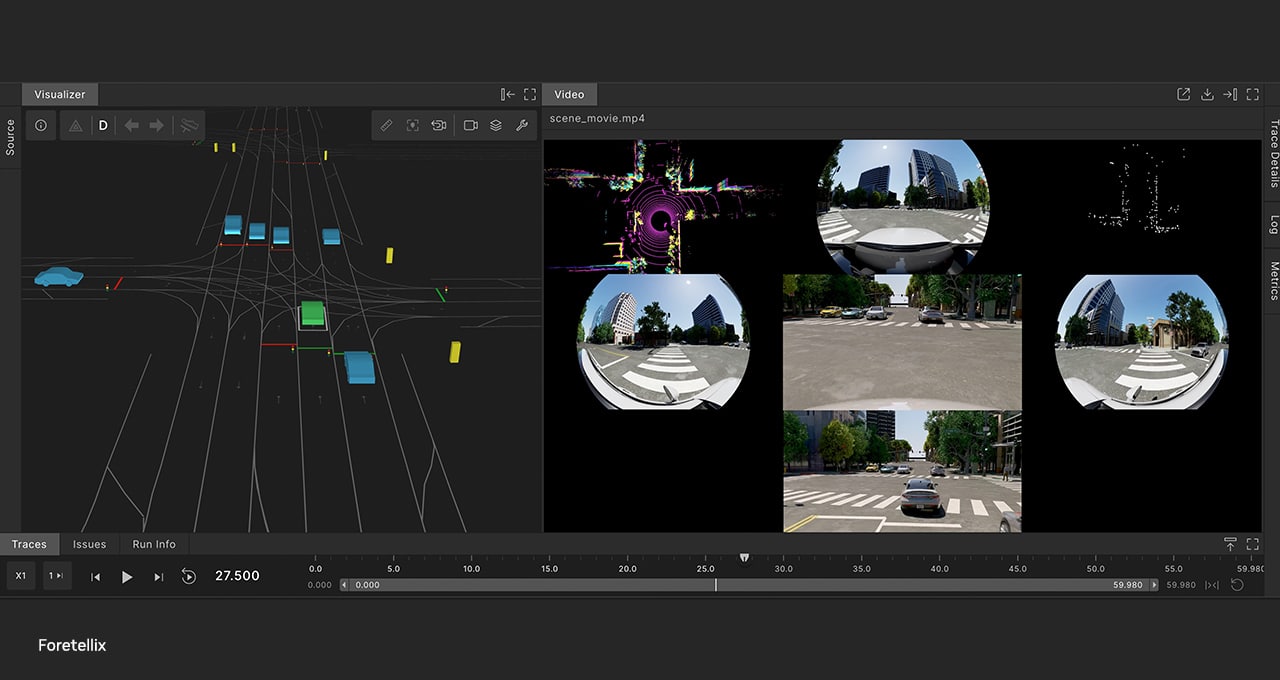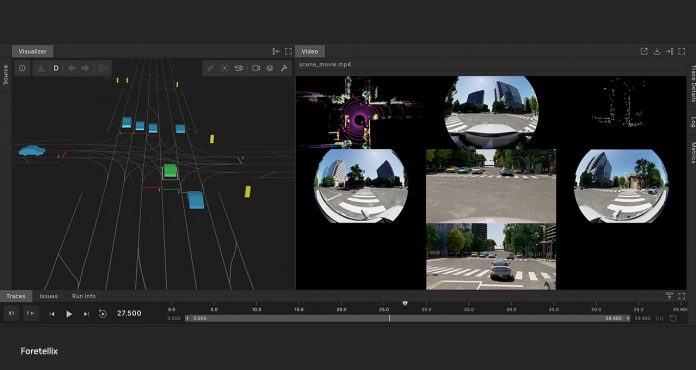
Generative AI and foundation models let autonomous machines generalize beyond the operational design domains on which they’ve been trained. Using new AI techniques such as tokenization and large language and diffusion models, developers and researchers can now address longstanding hurdles to autonomy.
These larger models require massive amounts of diverse data for training, fine-tuning and validation. But collecting such data — including from rare edge cases and potentially hazardous scenarios, like a pedestrian crossing in front of an autonomous vehicle (AV) at night or a human entering a welding robot work cell — can be incredibly difficult and resource-intensive.
To help developers fill this gap, NVIDIA Omniverse Cloud Sensor RTX APIs enable physically accurate sensor simulation for generating datasets at scale. The application programming interfaces (APIs) are designed to support sensors commonly used for autonomy — including cameras, radar and lidar — and can integrate seamlessly into existing workflows to accelerate the development of autonomous vehicles and robots of every kind.
Omniverse Sensor RTX APIs are now available to select developers in early access. Organizations such as Accenture, Foretellix, MITRE and Mcity are integrating these APIs via domain-specific blueprints to provide end customers with the tools they need to deploy the next generation of industrial manufacturing robots and self-driving cars.
Powering Industrial AI With Omniverse Blueprints
In complex environments like factories and warehouses, robots must be orchestrated to safely and efficiently work alongside machinery and human workers. All those moving parts present a massive challenge when designing, testing or validating operations while avoiding disruptions.
Mega is an Omniverse Blueprint that offers enterprises a reference architecture of NVIDIA accelerated computing, AI, NVIDIA Isaac and NVIDIA Omniverse technologies. Enterprises can use it to develop digital twins and test AI-powered robot brains that drive robots, cameras, equipment and more to handle enormous complexity and scale.
Integrating Omniverse Sensor RTX, the blueprint lets robotics developers simultaneously render sensor data from any type of intelligent machine in a factory for high-fidelity, large-scale sensor simulation.
With the ability to test operations and workflows in simulation, manufacturers can save considerable time and investment, and improve efficiency in entirely new ways.
International supply chain solutions company KION Group and Accenture are using the Mega blueprint to build Omniverse digital twins that serve as virtual training and testing environments for industrial AI’s robot brains, tapping into data from smart cameras, forklifts, robotic equipment and digital humans.
The robot brains perceive the simulated environment with physically accurate sensor data rendered by the Omniverse Sensor RTX APIs. They use this data to plan and act, with each action precisely tracked with Mega, alongside the state and position of all the assets in the digital twin. With these capabilities, developers can continuously build and test new layouts before they’re implemented in the physical world.
Driving AV Development and Validation
Autonomous vehicles have been under development for over a decade, but barriers in acquiring the right training and validation data and slow iteration cycles have hindered large-scale deployment.
To address this need for sensor data, companies are harnessing the NVIDIA Omniverse Blueprint for AV simulation, a reference workflow that enables physically accurate sensor simulation. The workflow uses Omniverse Sensor RTX APIs to render the camera, radar and lidar data necessary for AV development and validation.
AV toolchain provider Foretellix has integrated the blueprint into its Foretify AV development toolchain to transform object-level simulation into physically accurate sensor simulation.
The Foretify toolchain can generate any number of testing scenarios simultaneously. By adding sensor simulation capabilities to these scenarios, Foretify can now enable developers to evaluate the completeness of their AV development, as well as train and test at the levels of fidelity and scale needed to achieve large-scale and safe deployment. In addition, Foretellix will use the newly announced NVIDIA Cosmos platform to generate an even greater diversity of scenarios for verification and validation.
Nuro, an autonomous driving technology provider with one of the largest level 4 deployments in the U.S., is using the Foretify toolchain to train, test and validate its self-driving vehicles before deployment.
In addition, research organization MITRE is collaborating with the University of Michigan’s Mcity testing facility to build a digital AV validation framework for regulatory use, including a digital twin of Mcity’s 32-acre proving ground for autonomous vehicles. The project uses the AV simulation blueprint to render physically accurate sensor data at scale in the virtual environment, boosting training effectiveness.
The future of robotics and autonomy is coming into sharp focus, thanks to the power of high-fidelity sensor simulation. Learn more about these solutions at CES by visiting Accenture at Ballroom F at the Venetian and Foretellix booth 4016 in the West Hall of Las Vegas Convention Center.
Learn more about the latest in automotive and generative AI technologies by joining NVIDIA at CES.
See notice regarding software product information.

